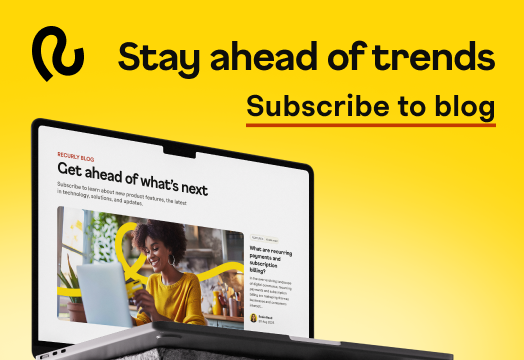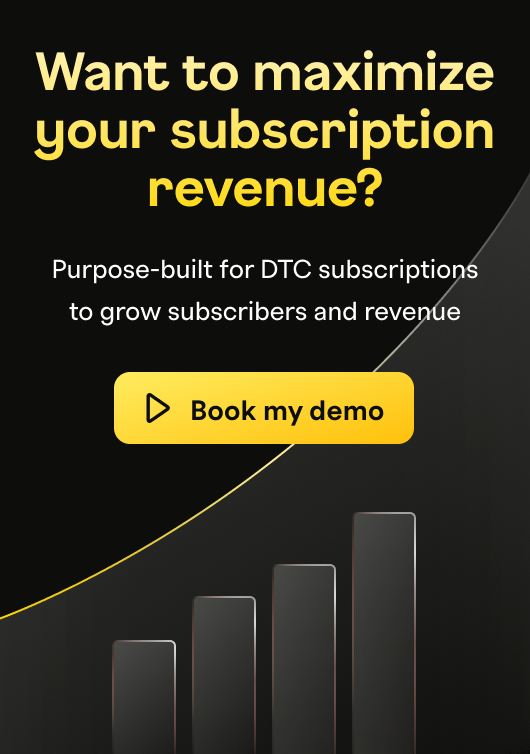App payments are changing: 3 ways subscription app businesses should prepare

A slew of recent verdicts and agreements in South Korea, the US, and Japan have challenged Apple and Google’s control over their platforms’ app marketplaces. Apple must now allow developers to link out to their own payment pages on iOS, and Google—whose Android operating system is installed on most smartphones worldwide—is likely to follow suit. This blog post is the first in a series that will explore the implications of these developments for subscription app businesses.
Since Apple’s App Store and Google’s Play Store launched, developers selling mobile apps through these two marketplaces have had to route in-app purchases through Apple and Google, relinquishing 15-30% of their revenues in the process. A number of recent rulings and agreements, however, portend major changes to this paradigm: subscription app businesses will soon be able to direct users to their own payment pages, thereby taking more ownership of the checkout flow.
This is a big deal. By directing your users to go through your own purchase path rather than through Apple or Google, you have the opportunity to expand your customer base more strategically, drive greater retention, and potentially increase your margins. This holds doubly true for subscription app developers, which process payments on a recurring basis.
Subscription app businesses don’t know exactly how or when Apple or Google will modify their app marketplaces in response to these developments, but it’s clear the times are a’changin’. Here are three actions you should take now to ensure you’re ready for changes to the mobile payments landscape.
1. Identify winning strategies for expansion and retention
Though Apple and Google’s in-app purchase models are incredibly convenient for consumers, who only have to connect a payment card once and then easily authenticate purchases with a couple of taps, the App Store and Google Play remain somewhat of a black box for app developers. For example, while Apple and Google provide rudimentary tools to help you monitor and address involuntary subscriber churn and offer discounts, you don’t have a great deal of flexibility to email subscribers how or when you might want to.
The problem: when Apple and Google retain control over the payment experience, developers can’t effectively use payments as a growth catalyst.
Fortunately, many subscription app businesses have a percentage of their customer list who signed up outside of the App Store or Google Play. With expanding your subscriber base and retaining more of your customers in mind, you should start experimenting with a variety of coupons, discounts, trial offers, payment methods, and revenue recovery strategies. You can then identify the most successful strategies and use them as a strategic lever to attract more subscribers to your “owned” camp once the App Store and Google Play walls come down.
For instance, you could not only link out to your own payment page from the App Store or Google Play, but also offer a 5-10% discount to people who subscribe to your app through the page you manage. You could also try offering longer trials through your own system, incentivizing people to sign up through you instead of through the App Store or Google Play. Additionally, you could draw in more subscribers by offering more payment options; Venmo, for instance, is a great way to engage and retain a new generation of subscribers.
Finally, take a close look at your involuntary churn rates. A subscription management platform can help you update out-of-date credit card details automatically, intelligently retry failed transactions at the right times, and easily send out dunning notifications—these capabilities far outshine what Apple and Google provide.
By starting to more actively engage with even a subsection of your user base now, you’ll be better prepared for when more subscribers come your way outside of the App Store or Google Play payment systems.
2. Improve your mobile experience
Getting every facet of your mobile experience right is key to growing your subscription app business (as a mobile app creator, you already know this). In determining the quality of your mobile experience, consider your signup flow, integrations with other apps and device-specific features, and cancellation experience. Take a deep look at:
How users sign up and get going
Streamline the signup process by asking for less information initially
Don’t bombard new subscribers with too many emails or notifications that they might find annoying
Ensure users don’t have to jump repeatedly between their email or messages and your app
Keep personalization and branding in mind when designing payment pages
Integrations with device or OS-specific features that users love
On iPhones and iPads, Face ID, Apple Pay, Sign in with Apple, and credit card scanning in Safari are popular
Consider offering users the option to secure their account by using Google Authenticator or Authy instead of using SMS
Your cancellation process
Don’t make cancelling unnecessarily challenging—it’ll only upset users further and make them less likely to recommend your app to friends and family
Offer an alternative to cancellation, such as pausing, so you can hold on to those passive customers while making it easy to re-engage them with offers and more
Holistically evaluating the quality of your mobile experience now is key, because the better your mobile experience, the more likely users are to subscribe to your services when you move to your own payment process.
3. Prepare your business for what’s next
Before you even start to think about creating your own payment system outside of the App Store, it’s worth getting a sense for how urgent this is and how much of a difference it would make to your business. Ask yourself: how much pressure does Apple’s 15-30% cut put on my margins?
For example, some subscription app businesses have extremely high marginal costs and would benefit substantially from escaping the “Apple tax.” This is true even for streaming services: today, Netflix and Spotify don’t offer in-app purchases because they face expensive content licensing fees, making it hard to give up 15-30% of their subscription revenue to Apple. If you decide to use your own payment system, keep in mind the costs of building vs. buying a subscription management solution.
One often-overlooked advantage of owning the payments process is your ability to accept a wide variety of payment types. There’s a host of reasons to do so, from enabling backup payment methods to increasing subscriber happiness (and, consequently, LTV).
While Apple and Google’s payment systems only accept credit cards and gift cards, partnering with a company like Recurly can help you accept alternative payment methods (APMs) like PayPal and direct debit. Additionally, you’ll be able to add a backup gateway to your payments tech stack and enable gateway failover to reduce failed transactions.
It’s clear that the winds are blowing in favor of subscription app companies that want to protect more of their revenue, but there’s still a lot we don’t know about what comes next. For instance, we don’t yet know if Apple and Google might choose to limit the promotion of apps that link to outside payment pages (although the courts would likely frown on punitive actions like hindering distribution for such apps).
Regardless of how exactly things pan out, subscription app businesses have an exciting future ahead. By figuring out the right expansion and retention strategies, consolidating your subscriber data, improving every aspect of your mobile experience, and understanding where the friction points lie, you’ll be poised for success moving forward.


